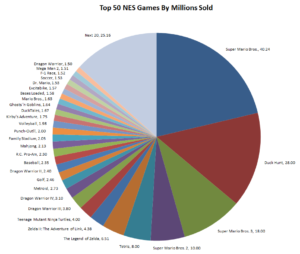Nintendo seems to think that everyone has been doing multiplayer wrong for years. Everyone. Usernames are dumb. Bluetooth headsets are clunky. Voice chat is a fad. Among other things, it seems like they are intent on reinventing the wheel, along with fire, water mills and most other human technologies. This is not entirely without precedent; this is Japan we’re talking about.
With their latest venture, Nintendo had a shiny new CEO in place and sounded eager to shrug off its outdated habits. Many fans hoped for a brighter (or at least more up-to-date) future of modern multiplayer and OS design.
Many of those hopeful fans were betrayed, or at best ignored.
From the start, things were a bit off. While many hoped that the company would finally enter the current decade and embrace usernames, their hopes were dashed when it was revealed that the Switch would still use friend codes. This alone is embarrassing enough, but then again this is also the same company that applied its addiction to friend codes to an actual game.
But at the same time, this goes against the grain. Nintendo has prided itself on being a company that promotes social gaming; ostensibly this was a driving force behind the development of its “XL” handhelds, and was a prominent element of the marketing campaign for the Switch. Yet they also implement arcane and overcomplicated ways of socializing in their games and services.
Notably, in Miitomo (Nintendo’s re-version of Sony’s Playstation Home environment), there are four methods of adding new friends: find them by scouring your friend lists on social platforms such as Twitter or Facebook, bring your phones into physical proximity, invite them via email or text, or add someone who is a friend of a friend. There is no way to simply search for a person and then add them, like every other social platform in existence allows you to do. No, Nintendo has to build their own drum, write their own beat, and march to it in their own strange way.
But now the humiliation has extended to their latest multiplayer franchise, Splatoon. The new Switch features 4v4 online matches, local matches (either with one unit shared via split-screen or multiple units communicating wirelessly!), and offline play, including co-op on the side.
But therein lies the first caveat. The co-op isn’t just a normal line item on the game’s menu, like every other game ever concieved. No, sir, it’s part of the game’s online map rotation. Players don’t simply vote for the next map to be played, nor is it determined randomly. Maps are on a fixed rotation–only two maps available for play at a given time, cycling every four hours. If you don’t play well on the two maps currently active, you’re just screwed.
But wait, there’s more! Co-op isn’t just a mode, it’s a map! This means that if people want to play co-op online, they have to wait to play it at specific times of the day! Right now you might be saying, “Wow, that’s just Nintendo giving everyone a giant middle finger,” but no, there’s still more to come.
The real piece de resistance here is the hardware.
See, Nintendo thinks that wireless chat headsets are dumb. Who really wants to use those, anyway? And voice chat, on the system you’re playing on? That never works, it’s too unreliable. Microsoft and Sony have just been chasing their tails for the past 15 years, with no success. But Nintendo knows exactly what to do.
What you do is, you roll out a voice chat app for smartphones. On its face, this isn’t too bad, it just feels quirky and odd. On the one hand, separating voice chat from the game itself has its advantages. But there is something more lurking beneath the surface, because next you have to consider: what if I want game audio and voice chat at the same time?
Nintendo’s got you fam. All you have to do is sit there with your Switch in your hands and your phone on the seat next to you, with this damn goofy looking adapter somewhere between them. You could put your phone in your pocket–that’s not entirely an unreasonable demand–except you might accidentally input a command or something, because the screen must remain on, with the app in the foreground, or it drops the call. What’s that? Battery life? Just plug in one of those big external batteries for that. Problem solved. You need to check a text or look up a guide real quick? Just have another phone handy. Simple!
Yeah, now this is just bullshit. It might actually just be Nintendo trolling people, or being ironic. I don’t know, but it’s definitely bullshit. There’s a good deal of overlap between these categories. Personally I don’t give a shit about voice chat–if I make use of voice chat while gaming, it’s going to be with friends, via an external app I can control independently, rather than with 12-year-old edgelords who claim to have slept with my mother and think I’m entirely incapable of playing the game in the singular manner they have determined is correct.
I suppose next Nintendo will announce that wifi is too difficult to implement, and release a little modem/router you have to carry with you everywhere that will just siphon power off your smartphone.
Here’s hoping they don’t read this.

